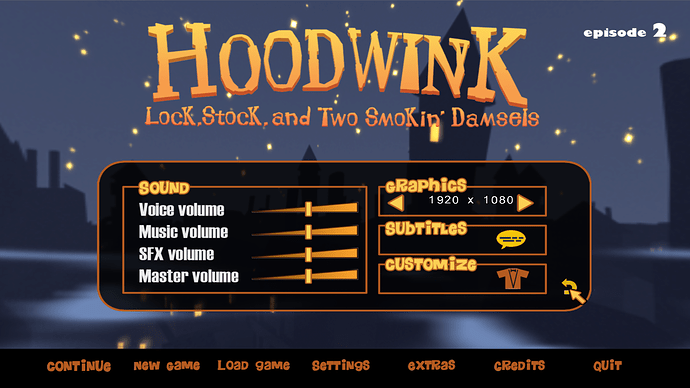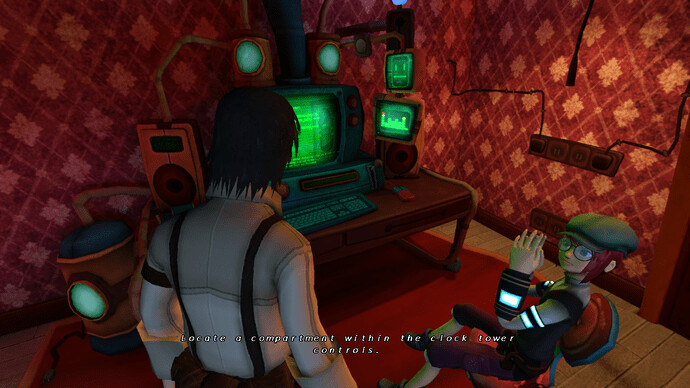Hey so, I’m interested in learning and using JMonkey, my biggest fears with the engine are the lack of graphical capability, from what I’ve seen games made in JMonkey just don’t look that great, compared to games made in other engines such as unity, or unreal. I understand that those engines had many more developers and hours put into them, but that doesn’t mean anything to me, can jmonkey provide good looking graphics? Frankly, the best game graphic wise I’ve seen is skullstone, and while it’s nothing to scoff at, it’s not very great either.
In short, can someone show me an example of a good looking game made in jmonkey, since most look like they’re from the early 2000s, understandably since most developers are solos though?
The differences are as you said. No Open-Source engine is capable of being a “Unity”.
jMonkey games Can look great, but its up to the developer to make them look great.
You can explore the Monthly WIPs, you’ll probably find something that looks really good.
This is a good one, Hoodwink by @Ecco.
Some pics:


Not sure if these are from the same game, but are still by Ecco.
jMonkey has tutorials for PBR, which is key to making “great-graphics”
https://jmonkeyengine.org/showcase/pbr_tutorial/
1 Like
This is really the crux of it - jME offers a similar PBR system to other engines, and PBR lies at the heart of modern graphics. However, your graphics will only be as good as (a) the assets you use for rendering, and (b) the lighting information you feed the PBR shaders. As far as (a) goes, Unity and Unreal have extensive stores of PBR based models, textures, etc. If their individual licenses allow, you can use them in jME though they’ll likely require conversion in Blender to GLTF (unless they’re already in GLTF format, in which case you should be able to import them straightaway). jME also has the standard light probes available for (b), and while I’ve not used Unity I believe the feature set is comparable - jME does have a full standard PBR pipeline. Unreal’s graphics will tend to exceed both Unity & jME because they use a number of advanced in-house techniques that go beyond what simple light probes can do.
At the end of the day it all comes down to your preferred toolchain. If you’re OK with Unreal & want the best graphics in the least amount of time, it’s probably the direction to go - but if you want anything custom you’ll be writing C++ or Blueprints. Unity & jME are probably about a tossup in terms of engine functionality, though you’ll find Unity’s GUI tools are well beyond jME’s - but Unity is also highly opinionated about code/game structure, and you have to develop in C#. If you want a “programmer’s engine,” jME is a great fit because (a) you have the advantage of developing in modern Java, which leads the industry in modern cross-platform development, and (b) it’s mature, quite capable, and is easy to do advanced work in without the engine stepping on your toes by insisting that you do things its way. There are things that jME can’t compete with Unreal on, and likewise there are things that Unreal can’t compete with jME on. Deciding which feature set you’re looking for is probably the best way to guide your choice of engine.
its all about assets


if you use nice assets, the game will also look good, the only thing to care is LOD managment and Geometry amount to make FPS high enough.


you can also enhant Terrain using Ricc Parallax available on JME Store:
here is even some tutorial:
@AcidViper so generally its all about Assets / Shaders.
The only problem in JME is lack of games that are AAA kind of. And there are some people here that maybe when finish their games, it will look really good.
JME is really fast if you know how to develop games (about avoid many Geoms / manage LODs / and have proper code)
Also JME Power is freedom and no fees.
You can use ANY Lib you want, C or JVM based, both.
You can use ANY IDE you like.
etc etc
Disadvantage? well, not many core devs and no AAA games like i said.
9 Likes










![jMonkeyEngine - [WIP][Physics Based]Custom voxel - destructible mesh](https://img.youtube.com/vi/SaOTyHCC5jY/maxresdefault.jpg)

